5. Brawl in Cell Block 99
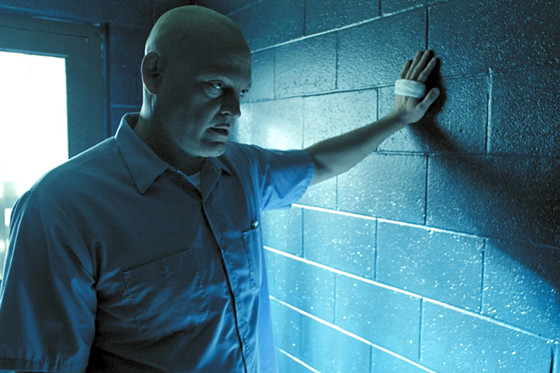
“Brawl in Cell Block 99” is the most recent entry on this list and as of right now it is the hardest to access. The film released less than a month ago and only to few select theaters. Its limited release thus far is a pretty big shame given its breathtaking ferocity and spectacular Vince Vaughn performance.
Director S. Craig Zahler is not exactly a name you hear thrown around in conversation regarding masters of cinema. In the future, however, that may all change. His previous endeavor, “Bone Tomahawk”, was part fond tribute to the Western genre and part hyper-violent sideshow.
With “Brawl in Cell Block 99, he took the horrific sideshow part to and cranked it up to 10. Quietly basing the title and vaguely the plot on the 1954 controversial bombshell “Riot in Cell Block 11”, “Brawl in Cell Block 99” is a spool of violence that unhinges in all the right ways. It doesn’t unleash its wrath right away, but when it does, it never lifts its foot off the pedal until the credits start their rolling.
If you are even remotely a fan of action and exploitation, this one could be right up your cell block.
4. Drive
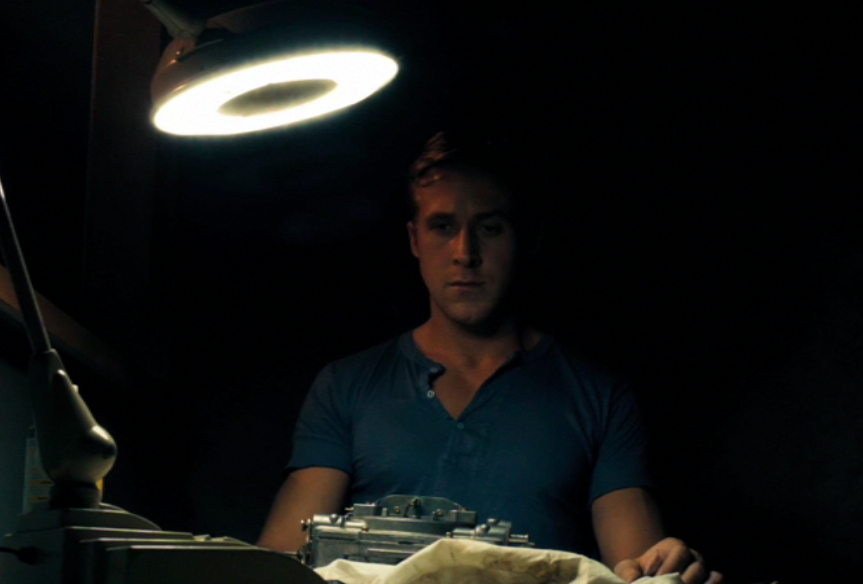
What to say about Nicholas Winding Refn’s exquisite magnum opus that hasn’t already been previously stated? There isn’t much. If you are an avid reader of Taste of Cinema or at least a part time cinephile, you’ve probably encountered “Drive” on several occasions. This film is the cinematic equivalent of cocain. Both highs are typically inhaled off a disc and are sure to leave the user in gaping awe as well as overwhelming ecstasy. It is a kind of perfect overture that most directors run themselves ragged striving to create yet seldom pull off with such virtuoso.
Many films wish they were perfect. But Drive knows it’s perfect. If you’ve been living as a total recluse for the last six years, with your only friend and on and off lover being a volleyball I will briefly describe the plot. Drive is a movie that centers around a Hollywood stunt driver by day who secretly moonlights as a getaway chauffeur for criminals by the night. Like other films on this list, it seems unfathomable to twist this sort of canvas in an original way.
Especially considering that Walter Hill released an already perfect telling of the exact same scenario (The Driver) years previous. Yet Refn somehow conquered the towering obstacles combating him and facilely forged one of the greatest films of the century.
Every frame is without fallacy. Every line is quotable. The lighting is groundbreaking. The soundrack and score are risky and bold. The performances by Ryan Gosling, Carrie Mulligan, Bryan Cranston, Christina Hendricks, Oscar Isaac, Ron Pearlman, and Albert Brooks are just as memorable as they are terrific. Specifically Albert Brooks’ turn as the soulless, dead eyed mobster “Bernie Rose”.
So how does it classify as an ode to exploitation? Simple. First and foremost, the director himself has confessed to being an avid fan of exploitation/horror cinema. He’s also gone on record saying the film that inspired him enough to make films himself was Tobe Hooper’s macabre shocker “The Texas Chainsaw Massacre”.
In Drive, theses two comments couldn’t be more clear. The ultra violence fetishized frequently throughout the majority of the film is so extravagant and blunt that it’s practically its own character. During one especially nasty scene, in the claustrophobic inclosure of a glossy gold elevator, the Driver pummels the defenseless face of a hitman with the crush of his boot until the hitman’s skull completely caves in. If that’s not exploitation cinema, I don’t know what is.
3. Jackie Brown
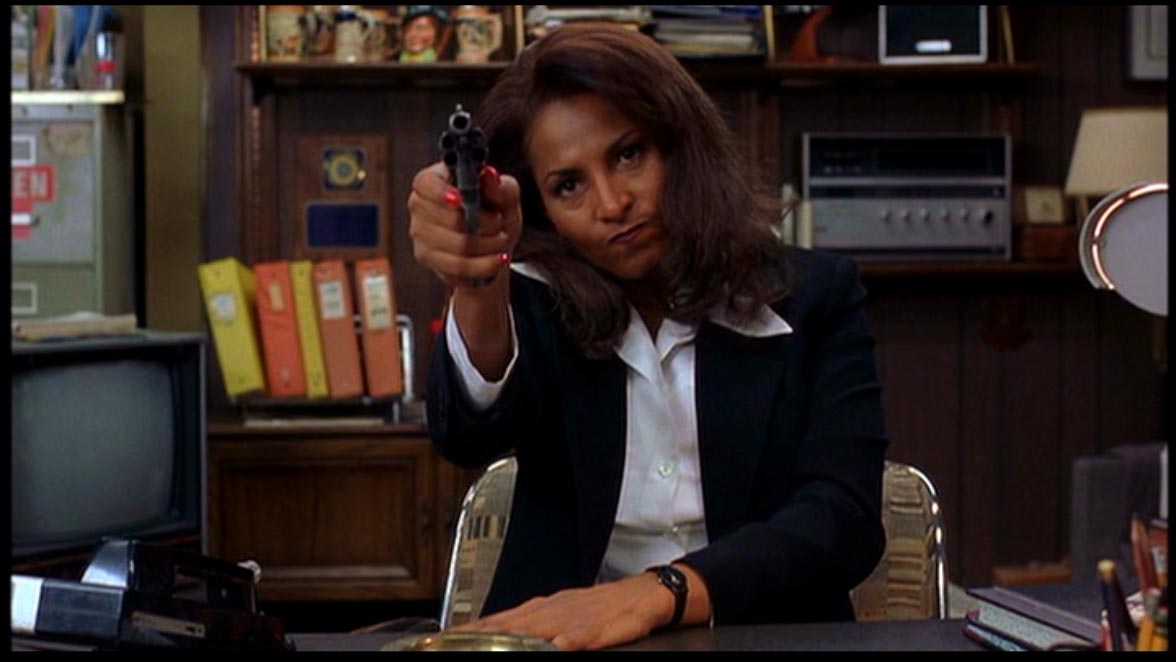
Quentin Tarantino has never been one to hide nor suffer embarrassment from the glaring scenes he’s pilfered straight from other works. Much like a cover band, he’s built an entire career out of mimicking the genius of others while adding in a pinch of his own spice. But he does it with such innocent infatuation and blunt integrity that it doesn’t seem the slightest bit wrong. In fact, the Hollywood boy wonder builds his references to be so coy and cool that it feels like a privilege to have part of your craft plagiarized by him.
For this list, a number of Tarantino’s films could have fit just as well as his “Pulp Fiction” follow up “Jackie Brown”. However, “Jackie Brown” elevates itself as the prime candidate based upon the fact that it is the superior ode to an idiosyncratic genre that, with changing times, may very well disappear from the film reel forever. That genre, is “Blaxploitation”.
Originally basing the film on the Elmore Lenord novel “Rum Punch”, Tarantino took his own creative liberties to alter the book’s characters and storyline to fit within the bounds of blaxploitation cinema.
Casting his lead roles out to Pam Grier and Robert Forster, two of blaxploitation’s most intense performers, and changing the title to be that of a salute to the titular character in “The Friend’s of Eddie Coyle”, Tarantino set out to pay his dues to the very best of the blaxploitation era.
Directly referencing films like “Mandingo”, “Buck Town”, “Coffy”, and “Foxy Brown” (which Grier also starred in) while also melding the kind of steely, brisk, thug attitude that only the baddest of blaxploitation films can kick, Tarantino sleekly pulls off an extremely stylized noir caper that serves as an enthusiastic mirror to cinema’s most superb bygone fad.
2. Dog Eat Dog
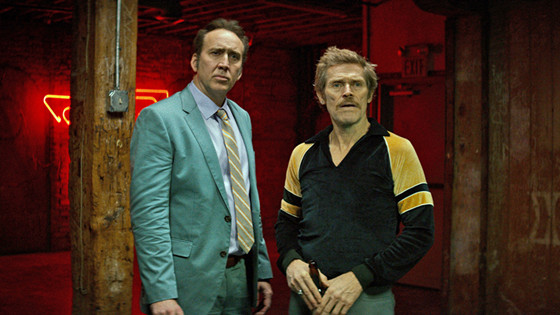
Paul Schrader was once known as a prophetic genius among gods for his impeccable originality and incisive ability to depict the scathing paranoia and isolated loneliness that burdened an entire generation. Cannonballing his career off with a series of outstanding blasts, Schrader poetically penned a plethora of exemplary scripts for fabled director Martin Scorsese. Together the two were an unstoppable avalanche of legendary perfection. A team of dreams.
Making two parts of the holy trinity to us cinephiles, they gifted us with unforgettable miracles through “Bring Out the Dead”, “The King of Comedy”, “Last Temptation of Christ”, “Raging Bull” and the self destructive parable of God’s lonely man “Taxi Driver”.
When the duo finally split ways, Schrader’s exuberance didn’t stumble. He proved that even without the aid of his trusty comrade, he was worthy of all his commendations. Persevering through directing a flock of astounding titles his own (“American Gigolo”, “Mishima”), it seemed that Schrader was an unbeatable force to be reckoned with. But as he aged, he promptly faded away from the limelight and into the void of condemning darkness.
In 2013, however, there was a faint glimmer of hope when it was announced that Paul Schrader was partnering minds with notorious author Bret Easton Ellis for Hollywood-set noir “The Canyons”. The hype came in a raucous title wave of impatient excitement.
Many predicted the project to be Schrader’s return to his rightful throne. But what seemed like a match made in heaven, was soon revealed to be a nightmarish low point in both the artists’ careers. Sure “The Canyons” isn’t the worse film ever made, and all things considered it surprisingly touts a mesmeric rewatchability, but as far as critical and financial success goes the picture was an absolute failure.
Post-Canyons, it would only be logical that the last of Schrader’s partially loyal fan base would crumble to humiliated smithereens and swim in their tears while replaying their favorite scenes from Taxi Driver for the next thousand years. Yet there remained a single spark of enthusiasm when Schrader set eyes on the Edward Bunker novel “Dog Eat Dog” for his next undertaking.
Starring Nick Cage, Willem Defoe, and Christopher Mathew Cook as three cartoonish low lifes, the black comedy/crime thriller had been optioned since the 80s by many different directors including Walter Hill. Eventually landing in the capable hands of Schrader, it now seems as though he was the only one who could do it justice.
Opening in a rosey pink room with Willem Defoe’s character coldly murdering his wife and daughter during a drug laden episode, Dog Eat Dog announces with boldness the return of Schrader in his comfortable element. It is as if the project had breathed new life into his nail-in-the-coffin career. Fast, fun, and most significantly of all, insane, Dog Eat Dog demonstrates that no subject is dark enough to make a joke out of.
Everything from the kidnapping of a helpless, screaming baby to the stowing away of a dead, rotting corpse is displayed as no more than light, fluffy, mischief. It is a film that was infused from the cutting room floors of other exploitation films like “Requiem for a Dream”, “Natural Born Killers”, and “Pink Flamingos”. It doesn’t apologize once for any of its depravity and so it exhibits true sociopathic horror in a way only early exploitation films ever did.
1. House of 1000 Corpses
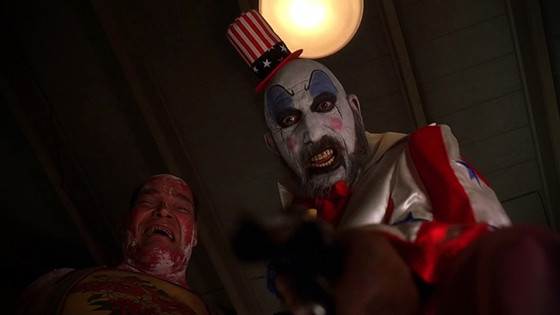
It all begins and ends with Rob Zombie. Well, it doesn’t exactly begin, but it certainly does end. Here is possibly the most controversial option on the list. The majority would say the aforementioned film “The Devil’s Reject’s” is Zombie’s purest ode to exploitation and horror. But the first part of his mantra love letter “House of 1000 Corpses” begs to differ.
Again, this film is packed from start to finish with affectionate homages to the grotesque, terrifying, and outright evil. However, being his debut, Zombie attacks the film with a kind of sick heart and child like optimism that he hasn’t been able to replicate since. He made this movie as if he genuinely believed he was a 60s/70s exploitation director reborn. Impersonating “The Texas Chainsaw Massacre”, the almost nonexistent plot consists of four clueless teenagers who stumble upon a family of demented, looney, hillbilly, masochists.
The narrative is so minuscule that is almost feels as though Zombie chose it strictly as a means to exercise his knack for references. But what references! Dues are respectively paid to “Freaks”, “Go West”, “The House of Seven Corpses”, “Mysterious Dr. Satan”, “The Funhouse”, “Halloween”, “The House by the Cemetery”, “The Evil Dead”, “The Warriors”, as well as many different 70s camera techniques. In one specific scene, Zombie even has the victims sit around a table for dinner with their lunatic assailants. Almost exactly like the dinner scene in “The Texas Chainsaw Massacre”.
It may not be Zombie’s best film, or most highly regarded, but it sure as shooting does make for perhaps the greatest tribute to horror and exploitation we will ever see.
As long as there are archives upon libraries of impressionable movies to sift through, there will always be passionate tributes and admiring love letters to cinema’s greatest, and not so great, offerings. As Pablo Picasso once put it, “good artists copy, great artists steal”.
Author Bio: Zane Van Cleave is an aspiring writer/director based in the Midwest. His inspirations include Takashi Miike, Abel Ferrara, and Martin Scorsese. Everything he does, he does for cinema. It is his religion. His God.